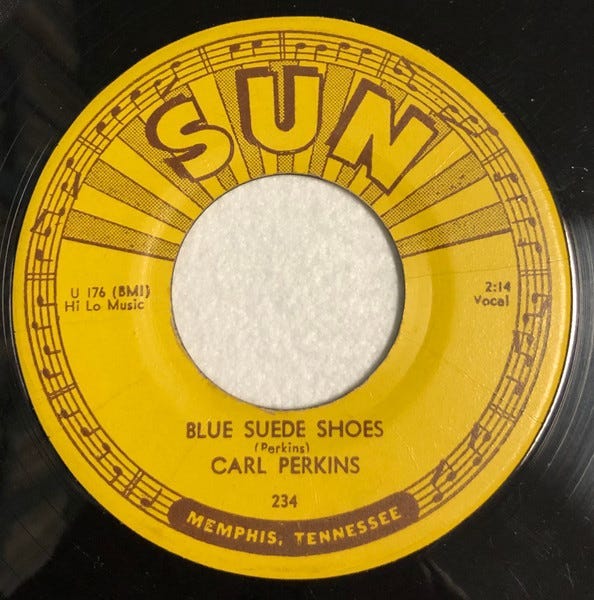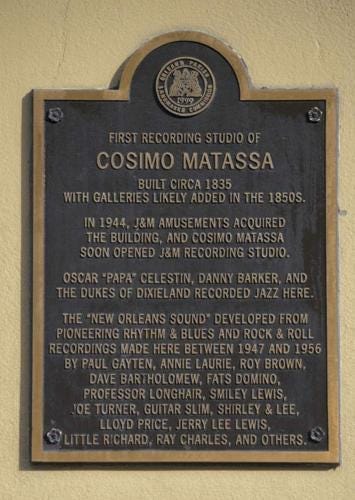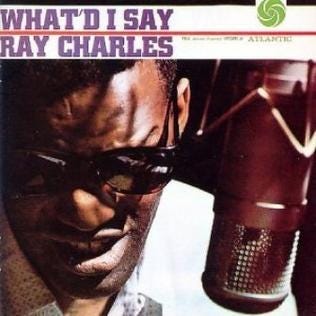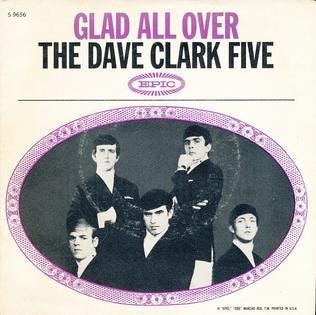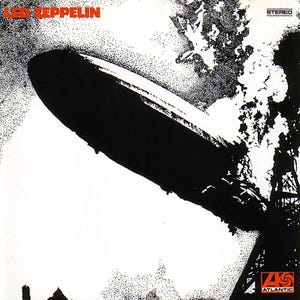The Play All Night Playlist Project: Chapter 2 "Living and Playing Music in the South (1960-1965)"
“Little brother we’ve got to get into this.” Duane Allman
Greetings readers! Today offers the fourth installment of the Play All Night Playlist Project. Chapter 2 of Play All Night! begins the book’s chronological narrative and covers the largest duration of time: from Duane’s early life to his and Gregg’s “discovery” of music and formation of their first touring band: the Allman Joys.
While I have your attention, check out/subscribe to YouTube. I’m regularly adding content including a lecture on Play All Night; a long-lost documentary; a pre-Sea Level track; and a special performance from TTB’s Gabe Dixon; among others.
“Little brother we’ve got to get into this,” the quote I used to lead the chapter, came from Galadrielle Allman’s tremendous Please Be With Me.1 It’s Gregg’s retelling of a Jackie Wilson-headlined rhythm and blues show that mesmerized both of them, particularly Duane. The concert changed their lives and, in turn, changed American music.

With this playlist, I wanted to give a sense of the music that they were listening to as they developed their first road band, the Allman Joys. It is far from comprehensive and is mostly tracks that either appear in the text or are songs that I feel are representative of this chapter. It features a veritable who’s who of musicians of the rock ’n’ roll era, from its earliest southern roots, to the British invasion.
All of this is in no particular order. Play front to back or shuffle.
Chapter 2 Living and Playing Music in the South
RHYTHM & BLUES/EARLY ROCK ’N’ ROLL
Elvis Presley “That’s All Right” and “Heartbreak Hotel” Elvis’s catalog is really deep, I stuck to one track from his Sun sessions and one from his first RCA record. Lots more to delve into here.
Buddy Holly “Not Fade Away” and “Well…All Right” “Not Fade Away” may be Holly’s most enduring song, covered by the Stones and the Grateful Dead among countless others. “Well…All Right” is a personal favorite of mine, which Blind Faith (with Eric Clapton and Steve Winwood) covered in 1969.
Carl Perkins “Blue Suede Shoes” and “Matchbox” Elvis hit #1 with “Blue Suede Shoes” while Perkins was recovering from a car accident. I like this version better. “Matchbox” shows why Perkins was among the earliest rock ’n’ roll guitar influencers. The Beatles covered this track, and he was a huge influence on George Harrison. In June 1969, Perkins sat in with Clapton and Derek & the Dominos on this track on Johnny Cash’s TV show. In 1970, Duane added slide to Ronnie Hawkins’s cover of “Matchbox.”2
Little Richard “Tutti Frutti” and “Long Tall Sally” Macon native “Little Richard” Penniman was one of rock ’n’ roll’s first true wildmen. “Tutti Fruitti,” Richard’s first hit, was originally an ode to anal sex. Songwriter Dorothy LaBostrie cleaned up the lyrics. It was the B-side to “Long Tall Sally” in the U.K., a song the Beatles covered. White crooner Pat Boone recorded a tame cover of “Tutti Fruitti” that hit big while Richard’s version was climbing the charts.
Fats Domino “Blueberry Hill” and “Ain’t that a Shame” Little Richard recorded “Tutti Fruitt” at Cosimo Matassa’s J&M Studios in New Orleans, the same studio where New Orleans piano player Fats Domino did his earliest recordings. “Blueberry Hill” is one of his best-known songs, it’s a cover of a 1940 #2 hit by the Glen Miller Orchestra. “Ain’t that a Shame” is another personal favorite. Domino hit #10 with it in 1955, Pat Boone hit #1. In 1978, Cheap Trick’s cover from At Budokan hit #35.3
Jackie Wilson “Lonely Teardrops” This hit #7 in 1959 (#1 R&B) and established “Mr. Excitement” as one of the country’s top entertainers. Wilson surely played this song when Duane and Gregg caught him in Nashville in the early 60s.
James Brown and the Famous Flames “Please Please Please” Brown’s first hit, reaching #6 R&B in 1956. It played regularly on Nashville’s WLAC.
Ray Charles “What’d I Say, Pt. 1&2” A setlist staple for countless garage bands in the 1960s, including the Escorts, Duane and Gregg’s earliest recording effort. The song hit #1 R&B and #6 Pop in 1959. Duane later recorded it with jazz flautist Herbie Mann in 1971.
Little Milton “Feel So Bad” Gregg Allman has long cited James “Little Milton” Campbell Jr. as one of his most significant influences. He later covered this on his Gregg Allman Tour album, released in 1974.
THE BRITISH INVASION
The Beatles “I Want to Hold Your Hand” and “Hard Day’s Night” I could opine on the Fab Four for hours, and sometime I will. I could easily put about a dozen other songs on this list. These two were what I was feeling at the moment.
The Rolling Stones “Around and Around” More than anything, this song shows the Stones’ rhythm & blues roots and Keith Richards’s devotion to Chuck Berry.
The Kinks “You Really Got Me” Just a killer rock ’n’ roll track. Simple rhythm, heavy backbeat, and Dave Davies’s distorted guitar. The Kinks are DEEP well, this only scratches the surface.
Dave Clark Five “Glad All Over” Truth be told, I never got into the Dave Clark Five, but they scored 17 top 40 hits from 1964–7. This track was regularly in garage band setlists of the mid-60s and has been covered by artists as wide-ranging as the Descendents, Quiet Riot, and the Pet Shop Boys.
The Animals “House of the Rising Sun” and “We Gotta Get Out of this Place” New Orleans looms large in most American popular music, as it does here, in the Animals’ updating of a folk song with somewhat murky origins. It hit #1 in 1964. “We Gotta Get Out of this Place,” by songwriters Gerry Goffin and Carole King, was one of the most popular on American Armed Forces Radio during Vietnam.
BRITISH BLUES
The Yardbirds “Over Under Sideways Down” and “I’m a Man” Named for jazz great Charlie “Bird” Parker, the Yardbirds launched the careers of Eric Clapton, Jeff Beck, and Jimmy Page. Both of these cuts feature Eric Clapton. The Allman Joys’ contemporaries regularly cited the band’s ability with the Yardbirds catalog. “I’m a Man” is a blues cover you might recognize. This is based on Bo Diddley’s version of the same name. Muddy Waters called his version “Mannish Boy.”
John Mayall & the Bluesbreakers “So May Roads” and “It’s My Own Fault” Clapton played briefly in Mayall’s band, as did a murder’s row lineup of British blues players who didn’t play in the Yardbirds, most notably Peter Green (“So Many Roads”) and Mick Taylor (B.B. King’s “It’s My Own Fault”). Green led Fleetwood Mac from 1967–1970 and Taylor joined the Rolling Stones from 1969–1974.
Cream “Born Under a Bad Sign” Once again, Eric Clapton makes an appearance. This time with a completely different band, Cream. I chose this Albert King cover to show how Cream expanded the blues form to something altogether different, an ideal that inspired Duane and the Allman Brothers Band immeasurably.
Led Zeppelin “Dazed and Confused” Critics often evaluated the ABB against Led Zeppelin. I won’t argue the comparison as fair/unfair except to say I have no compunction putting Zeppelin among the foremost British blues bands. This song shows again how the traditional blues song form could stretch.
Join the Long Live the ABB community:
Every Long Live the ABB subscriber should own Please Be With Me. Yes, that means you. Here’s the link again.
I’ve always felt a special connection to Carl Perkins, who played the first concert I attended at the O’Connell Center in Gainesville. Mel Tillis headlined and I’m pretty sure Roseanne Cash was also on the bill.
At Budokan was the first record I bought with my own money. I was in 2nd grade and “I Want You to Want Me” was all over the radio. I vividly remember how shocked I was when Dad started singing along to “Ain’t that a Shame”—he’d seen Fats Domino in the early 50s in New Orleans.



